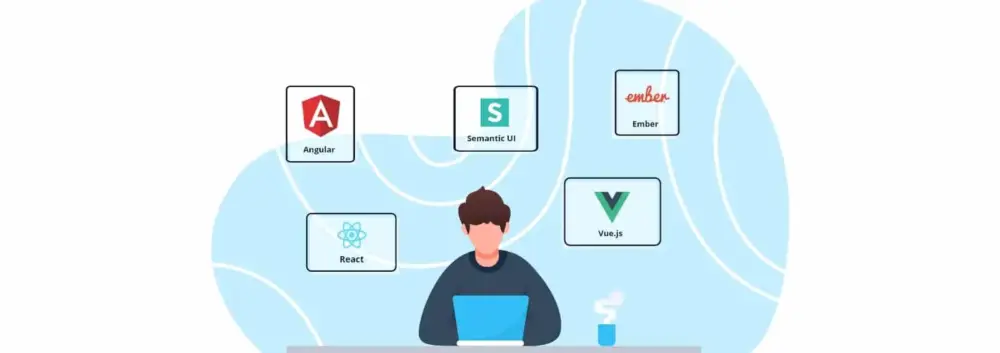Against the backdrop of rapid changes in the digital technology field, the programming language ranking serves as a guide for aspiring professionals and a strategic tool for those building a long-term career in IT.
The choice of technology stack directly affects job availability, payment size, project specifics, and professional growth trajectory. Modern IT trends dictate new rules – flexibility, security, universality. Let’s look at how the development landscape is changing and which stacks rightfully belong among the leaders in 2025.

Popular Directions and Influencing Factors: Programming Language Ranking 2025
The popularity of certain technologies is influenced not only by employer preferences but also by infrastructure, availability of educational resources, presence of ready frameworks, and level of automation. When compiling an up-to-date overview, parameters such as market demand, community support, applicability in commercial projects, and prospects for beginners were taken into account.
Based on the criteria, a programming language ranking was formed that meets the demands of the time. Below are the main participants in the race and the rationale for their positions.
1. Python – Universal Leader
Python takes the top spot, consistently leading the programming language ranking for several years. It remains an indispensable tool for data analysis, machine learning, automation, web development, and prototyping. Its simple syntax, extensive library, and huge community make it attractive for both beginners and experienced professionals.
2. JavaScript – Driving Force of the Web
JavaScript cannot be ignored. In 2025, it maintains its position thanks to its key role in creating client interfaces. Its popularity is fueled by modern frameworks like React and Vue, as well as server-side development capabilities through Node.js.
3. TypeScript – Strict Typing as an Advantage
Amid the proliferation of complex interface solutions, TypeScript’s popularity is growing rapidly – a superset of JavaScript with static typing. Thanks to type control capabilities at the compilation stage, it allows for creating more stable applications. More and more companies are integrating it into their development stack, strengthening its position in the overall programming language ranking.
4. Java – Stability and Scalability
Java continues to hold a key position in the corporate sector. It is in demand in the banking sector, in creating mobile applications for Android, and in systems requiring high reliability. Despite competition, Java remains among the leaders because it provides scalable architecture and data security.
5. C# – Flagship of the Microsoft Ecosystem
C# maintains strong positions due to deep integration with Microsoft products, including .NET and Azure. It is suitable for creating games (via Unity), business software, cloud solutions, and web services. Companies focused on the corporate segment actively use it, hence the programming language ranking consistently includes C# in the top five.
6. Go – Efficiency and Minimalism
Go (or Golang) is the choice of backend developers who value execution speed, architectural simplicity, and minimalism. It is used in creating distributed systems, cloud infrastructures, and high-load services.
7. Rust – Security and Control
Rust is actively evolving thanks to Mozilla’s support and its recognized approach to memory management without a garbage collector. It allows for developing secure and fast programs, avoiding many errors typical of low-level stacks. The use of Rust in browser development, operating systems, and crypto platforms influences its position in the programming language ranking.
8. Kotlin – Modern Alternative to Java
Kotlin is gaining popularity as the primary choice for Android development. Google officially supports it, and its conciseness, functionality, and compatibility with Java make it easy to transition between technologies. In the context of mobile applications and startups, the programming language ranking increasingly registers demand for Kotlin.
9. PHP – Stable Web Tool
Despite the emergence of new solutions, PHP maintains its position in server-side development. Millions of websites and CMS, including WordPress, still run on this language. Modern frameworks and updated versions maintain its relevance.
10. SQL – Databases
Although SQL is not a general-purpose option, it is indispensable for working with databases. Almost every application requires structured information processing, whether it’s analytics, storage, or transmission. Knowledge of SQL is part of the basic skill set for almost every IT profession, and its significance in the programming language ranking has been maintained for decades.
Which Skills Should You Develop?
Mastering syntax alone is no longer considered sufficient for a successful career. Employers increasingly seek professionals capable of thinking systematically, adapting quickly, and effectively collaborating with teams. Alongside any stack, it is important to concurrently develop auxiliary competencies. Among the priority skills are:

- knowledge of algorithms and data structures basics;
- understanding of OOP principles, design patterns;
- ability to work with version control systems, such as Git;
- experience in building APIs and interacting via HTTP protocols;
- skills in working with databases and writing SQL queries;
- basic DevOps practices: CI/CD, containerization, server configuration;
- ability to test code: unit tests, integration scenarios;
- skill in reading technical documentation and finding solutions;
- ability to apply English in professional communication;
- soft skills – teamwork, planning, critical thinking.
Competencies become universal for all specialists, regardless of the chosen specialization. Even with a high position in the programming language ranking, it is the presence of additional skills that allows a professional to confidently compete in the job market and tackle more interesting tasks.
Conclusions on the Programming Language Ranking
The programming language ranking in 2025 reflects the requirements for developers in the era of digital transformation. Leading technologies combine reliability, flexibility, industry support, and broad growth opportunities. Making the right choice allows for quick adaptation to the market, building a stable IT career, and forming a sought-after skill set.
 en
en  ru
ru  de
de  ar
ar  es
es  nl
nl  hi
hi  fr
fr  it
it  pt
pt  el
el 











